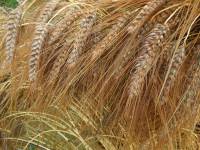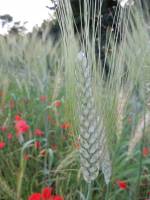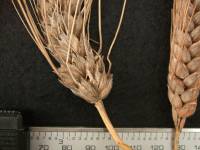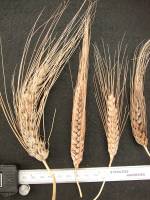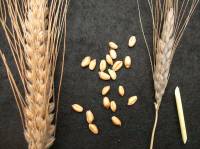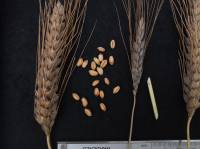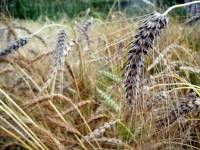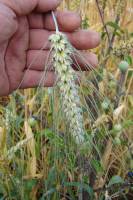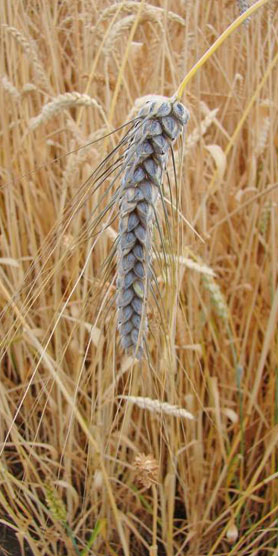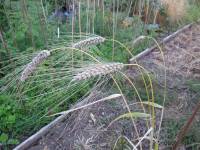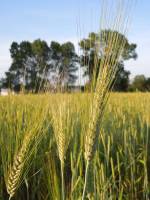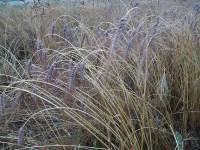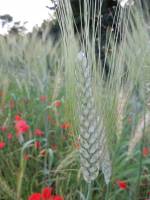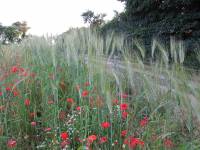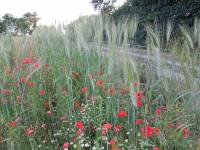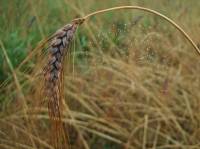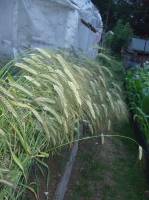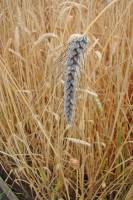 BBA wheat portal
BBA wheat portal
Blue Cone Rivetorigin:United Kingdom first record:1744 grain colour:amber yellow references >>> ID images >>> |
Blue Cone Rivet, popularly grown in late mediaeval times has gone by many names, Duck Bill, Blue Poll, Grey Mouse, Dugdale and others. A tetraploid wheat as with the durums, When grown on stiff soil very productive in grain and straw but not suitable for milling and bread making by itself but can make good bread with more moisture and flavour when blended with a wheat such as Lammas (viz Ellis). It was also the favourite wheat for making the medieval staple, a cracked wheat porridge called frumenty. According to Vilmorin, Blue Cone was also used in Northern France for pasta making though not explained whether this was fresh or dried pasta.
The wheat is tall, late maturing (so sown early, preferably two weeks before Michaelmas). Nearly all rivets are awned and these awns are noticeably barbed along their length. Straw has pith wall behind surface with top section often no longer hollow. At maturity ears bend over, with its velvet chaff and colour, when wet from rain the "Blue Cone" name is self explanatory. Awns often fall off at maturity especially if strong winds which may be origin of "poulard" French name for rivet wheat, as in "pollarded" trees, and from this the English name at some periods, "poll wheat".
One theory is that the rivet arrived in England with the Normans from Sicily. Certainly there are a group of rivets across Europe suitable only for growing around Mediterranean but there is also a group adapted to rugged mountainous cultivation such as the Nonette de Lausanne of which Blue Cone Rivet is a member.
One source says that the Blue Cone was good against deer as its barbed awns put them off eating it. Possibly its popularity during mediaeval times may be explained by this property since the poor peasant had no right to kill the marauding deer of his lord. Conversely this property may explain its demise in popularity as Ellis notes the chaff cannot be fed to horses because of the problems caused to their lips/mouths by these barbed awns.
Reference #1
Les meilleurs blés by Henry de Vilmorin, 1880 LINK"Poulard d'Australie
Syn. : Blé d'Australie; poulard bleu ; poulard bleu conique; blé gris souris; blue cone rivet.
D'hiver.
Paille pleine, haute, forte, assez fine pour un poulard.
Épi carré, s'amincissant à partir de la base, velu et d'un gris plus ou moins foncé; balles longues et fortes, grisâtres.
Grain jaune ou rougeâtre, assez allongé, bien plein, à peine bossu.
Nous conservons à cette variété le nom par lequel elle est le plus généralement désignée, bien que ce ne soit pas le plus ancien; elle était en effet connue sons les noms indiqués dans la synonymie, avant d'être transportée en Australie et rapportée de ce pays où il n'existe que des blés d'origine européenne. La culture en est très anciennement répandue en Angleterre et elle a fait de grands progrès depuis une dizaine d'années dans le nord de la France. Le poulard d'Australie se recommande par plusieurs qualités: il est rustique et s'accommode bien des argiles tenaces, froides et même humides; il talle beaucoup et donne un produit des plus considérables en paille et en grain, et son grain, jaune et fin, se rapproche beaucoup plus des blés tendres que celui d'aucun autre poulard. On doit le semer en octobre ou au commencement de novembre, un peu clair, parce qu'il talle beaucoup."
Reference #2
The Modern Husbandman, Oct - Dec by William Ellis, 1744 LINK"Duck-bill or Dugdale Wheat. In Essex they call this Grey-poll Rivet; in Hunlingtonshire, Dunover Wheat; in the West-country, Grey-poll and Blue-poll Wheat; in Hertfordshire, Duck-bill, or Dugdale Wheat. In Berkshire, there is a white-cone Wheat, whose Straw is like a Rush, full of Pith, and not hollow, like the Lammas Sort ; however, these are all bearded Wheats. The common Duck-bill Wheat has a darkish, brown, crooked, guttery Kernel, rather bigger than any other Wheat; but its Chaff is better thrown away to make Dung, than to give to Cattle, because, by the Sharpness of its Sides, it pricks and cankers the Horses Mouths."
Other references
The agriculturist's manual, forming a report of Lawson's agricultural museum in Edinburgh by Lawson seed and nursery Co. Ltd., 1836 LINK
The Country Housewife's Family Companion: Or, Profitable Directions for Whatever Relates to the Management ... of the Domestic Concerns of a Country Life by William Ellis, 1750 LINK
Blue Cone Rivet ID link
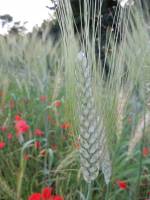
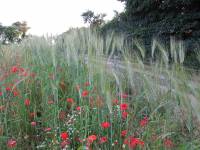
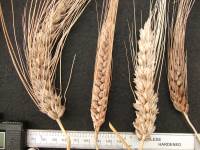
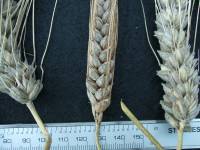
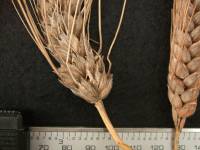
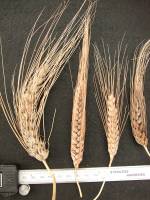
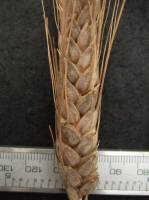
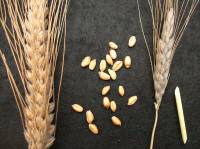
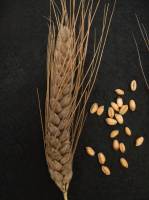
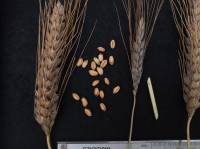
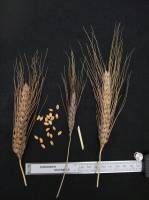
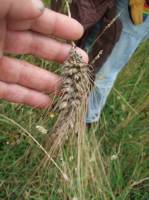
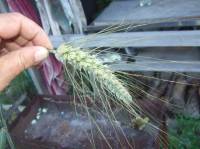
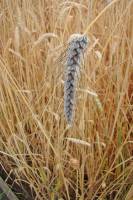
Blue Cone Rivet ID
